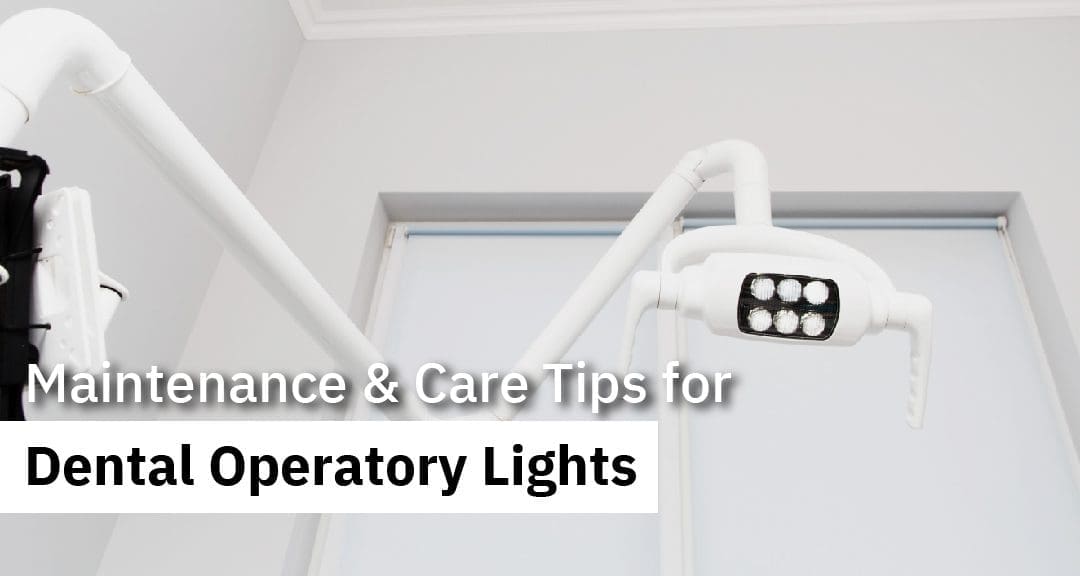
Dental operatory lights are essential to any dental practice, illuminating dental procedures. With proper maintenance and care, these lights can last for years, ensuring dentists have the necessary lighting to perform their procedures safely and accurately. However, neglecting to care for these lights can result in decreased performance, shortened lifespan, and increased expenses due to repairs or replacements. Therefore, it is crucial to implement proper maintenance and care tips to ensure optimal performance and longevity of dental lights.
Before discussing maintenance and care tips, it is essential to understand the different types of dental operatory lights and their functionality. Various dental operatory lights include halogen, LED, and fiber-optic lights. Each type has advantages and disadvantages, depending on the dental practice’s needs.
Halogen lights have been used for many years and are known for their bright, white light that resembles natural daylight. They are relatively inexpensive and provide adequate lighting for most dental procedures. However, they generate a lot of heat, which can be uncomfortable for the patient and the dentist.
LED lights are becoming increasingly popular in dental practices due to their energy efficiency, long lifespan, and reduced heat emission. They provide bright, cool light and are relatively easy to install and use. However, they can be more expensive than halogen lights, and their brightness may decrease.
Fiber-optic lights use a fiber-optic cable to transmit light from a remote source to the dental operatory light. They provide excellent illumination and are highly efficient, emitting minimal heat. However, they can be challenging to maintain, and their cost may be prohibitive for some dental practices.
Now that we understand the different types of dental operatory lights, it is time to discuss maintenance and care tips that can help prolong their lifespan and ensure optimal performance.
One of the most crucial maintenance and care tips for dental operatory lights is regularly cleaning the lens and light head. Dust, debris, and other particles can accumulate on the lens and light head over time, reducing the light’s intensity and potentially damaging the light. Therefore, it is essential to clean the lens and light head with a soft, lint-free cloth and a non-abrasive cleaning solution regularly. Cleaning the lens and light head after each use is also recommended to maintain optimal performance.
Another crucial maintenance tip for dental operatory lights is regularly replacing the bulb. The bulb’s lifespan can vary depending on the type of light, but generally, it should be replaced every six months to a year. Over time, the bulb’s brightness may decrease, affecting the quality of light and potentially impacting the dental procedure’s accuracy. Therefore, it is essential to replace the bulb regularly to ensure consistent and optimal lighting.
Regular inspection of the light head and arm can help identify potential issues or damage before they escalate. Check for loose or damaged components, such as screws, clamps, or brackets, and tighten or replace them as necessary. Also, inspect the arm for any cracks or damage and replace it if necessary. Any damage or issues with the light head or arm can affect the light’s stability and performance, potentially impacting the dental procedure’s accuracy and safety.
Protective covers can help prolong the lifespan of dental operatory lights by preventing dust, debris, and other particles from accumulating on the lens and light head. They can also protect against accidental damage, such as scratches or dents. However, it is essential to choose covers that are specifically designed for dental operatory lights and allow for adequate ventilation to prevent overheating. Regularly clean the covers and replace them as necessary to maintain optimal performance.
Properly positioning the dental operatory light is crucial to ensure optimal lighting and reduce the risk of shadows or glare. The light should be positioned directly over the treatment area and angled at approximately 45 degrees to provide adequate illumination. Ensure that the light is not too close to the patient’s face, which can cause discomfort or irritation. Additionally, avoid pointing the light directly at the patient’s eyes, which can cause temporary blindness or other eye problems.
Implementing proper maintenance and care tips for dental operatory lights can provide numerous benefits to dental practices, including:
Despite regular maintenance and care, dental operatory lights can experience issues that require troubleshooting. Here are some common issues and troubleshooting tips to help resolve them:
By addressing these common issues promptly and effectively, dental professionals can ensure that their operatory lights continue functioning properly, providing optimal lighting for dental procedures.
Dental lights are a critical component of any dental practice, providing the necessary illumination for dental procedures. Proper maintenance and care can help prolong their lifespan, ensure optimal performance, and reduce associated costs. For more information on dental supplies or any other necessary equipment to keep your practice up and running, find the best dental supplies on Dental Assets.

17821 E 17th St
Ste 180
Tustin, CA 92780
*Opt-in / Opt-out
**Customers provide their phone number and consent to receive messages via a form on our website